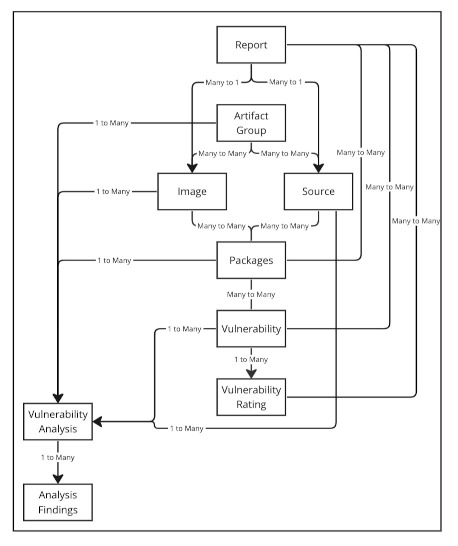Data models and concepts for Supply Chain Security Tools - Store
This topic describes the different data models and concepts the Supply Chain Security Tools (SCST) - Store uses for consuming and providing information.
Overview
This diagram shows an overview of the SCST - Store data models and their relations.

Software Bill of Material per build
Originally, the SCST - Store aggregated the data of all vulnerability scans submitted to it. This allowed users to see information from all scan results against an image or source. However, users couldn’t retrieve information against an image or source from a specific vulnerability scan. For example, a user can’t know from which vulnerability scan a specific CVE might have surfaced from. This is why VMware introduced Software Bill of Material per build for SCST - Store.

Items in blue are the new information saved with each vulnerability scan.
With each vulnerability scan submitted, the SCST - Store creates an internal report, which keeps track of the following from the vulnerability scan:
- The specific image or source
- Which packages were listed
- Which vulnerabilities were listed
- Which ratings were listed
Users can then search for all reports against an image or source with query for a list of reports.
After a report is located, a query for a specific report retrieves the information for that report. See Paths.
Vulnerability triage
The new Triage feature of Tanzu Application Platform allows you to store vulnerability analysis information alongside the current data handled by SCST - Store. Using the Tanzu Insight CLI, users can now perform basic triaging functions against any detected vulnerabilities. The main objective is to reduce spreadsheet and tool toil by centralizing CVE scanning, identification, and triaging in one place.

Highlighted items are the new information saved for vulnerability analysis. You can create, view, and update vulnerability analysis using the Tanzu CLI Insight plug-in.
See API resource.